Our definitive guide to all the words and terms you’ll need to decipher K-beauty like a pro.
![]()
Ampoule: In Korea, ampoules are hyper-concentrated versions of serums, made for use as a two- to four-week special treatment course before your essence or serum. Generally, ampoules come in smaller sizes due to their concentration, sometimes in small, one-time use vials in sets of 15 to 30 to use daily. Click here for further clarification on the difference between ampoules, essences and serums.
Aqua Peel: A Korean skincare treatment that hydrates while gently exfoliating with alpha hydroxy acids.
BB Cream: Derived from the term “blemish balm,” which was first developed in the 1950s by a German doctor for her post-peel patients, BB cream made the transition to cosmetic application when Korean women discovered its many all-in-one benefits, ranging from hydration to coverage to sun protection. BB cream is arguably the first Korean beauty import to the West and what started the global K-beauty phenomenon.
Chok-chok (촉촉): Literally translating into “damp” or “moist,” this term refers to super hydrated, dewy skin.
Chok-gwang (촉광): Incorporating the term chok-chok, which literally translates into “damp” or “moist,” this term imparts a juicy, almost wet shine to the face.
Cushion Compact: A Korean innovation in which foundation and sun protection is infused into a sponge contained within a compact and applied with a special rubycell puff.
Double Cleanse: The two-step process of first removing makeup and sunscreen with an oil cleanser and then cleansing skin with a foam cleanser.
Emulsion: Generally, a lightweight moisturizer to be applied after your serum/essence step. However, some Korean brands recommend their emulsion after the toner step and before the serum/essence step, so make sure to read the insert accompanying the product.
Essence: A treatment with a high concentration of active ingredients that is generally more lightweight in texture than a serum (and may also have less actives than a serum). An essence can be used in place of a serum or in addition to a serum, depending on skin’s needs. Originally, “essence” was the Korean equivalent of what we call “serum” in the West, though with the globalization of K-beauty, the terms are now often used interchangeably. Click here for further clarification on the difference between ampoules, essences and serums.
![]() Essence Toner: A liquid treatment, for use after cleansing and before your serum/essence step, that is essentially a hydrating toner with benefits that range from nutrients and anti-aging ingredients to a bouncier, more viscous texture. One way to tell the difference between a true essence and a treatment essence is the packaging, texture and size: True essences are fluid but still thick enough to require being in a pump or dropper bottle, while a treatment toner will almost always be over 75ml and close to a liquid, enough to require a bottle with a narrow opening. Synonymous with treatment toner and treatment essence.
Essence Toner: A liquid treatment, for use after cleansing and before your serum/essence step, that is essentially a hydrating toner with benefits that range from nutrients and anti-aging ingredients to a bouncier, more viscous texture. One way to tell the difference between a true essence and a treatment essence is the packaging, texture and size: True essences are fluid but still thick enough to require being in a pump or dropper bottle, while a treatment toner will almost always be over 75ml and close to a liquid, enough to require a bottle with a narrow opening. Synonymous with treatment toner and treatment essence.
Expiration Date: Generally, the date by which a product should be used, not to be confused with “manufacture date” (제조기한). As written in Korean: 유통기한. You may also see 까지 by the date, which means “use by” or “good until.”
First essence: A watery essence treatment that is typically used after a hydrating toner and before your true essence/serum step. See also: treatment essence, treatment toner, essence toner.
Gwang (광): A catchall term for that dewy, naturally luminescent finish favored by Korean women. Within gwang, there are gradations of dewiness that range from super glossy, almost Vaseline-like to a more subtle, lit-from-within glow.
Hydrogel Mask or Gel Mask: Pronounced with a hard “g” in Korea, this term refers to sheet masks made with hydrogel as opposed to cotton or paper.
K-beauty: Short for “Korean beauty,” this category of skincare and cosmetics is inspired and influenced by beauty routines, trends and technology from South Korea, including double cleansing, cushion compacts, and the ombré lip.
K-drama: Korean dramas, a fictional mini-series of anywhere from 16 to 50+ episodes. K-dramas range from romantic comedies to historical dramas to thrillers, and serve as insightful peeks into Korean culture, trends and even K-beauty. Some popular K-dramas include Boys Over Flowers, My Love From Another Star and Descendants of the Sun.
Kkul-gwang (꿀광): A hyper-glossy, almost greasy shine, like you spread honey all over your face (kkul means honey).
Lotion: A milky emulsion or lightweight moisturizer, often used after the essence/serum step and before a cream moisturizer. (Not to be confused with “lotion” in Japan; see “skin.”)
Manufacture Date: The date the product was produced or manufactured in the factory. This is different from the expiration date (유통기한). As written in Korean: 제조기한 or 제조
Mask or Mask Sheet: Sheet masks.
Massage: This generally refers to a Korean facial, which usually includes not just a mask and extractions, but an extended and vigorous facial, neck, shoulder and chest massage to contour, drain lymphatic fluids, and stimulate circulation.
Mist: A spray-on treatment that can be used after cleansing or throughout the day — even on top of makeup — to boost hydration levels in the skin.
Modeling Mask: Often called “rubber mask” for its rubbery, peel-off texture, this mask is used in top Korean skin spas for its ability to hydrate without evaporation. The key ingredient, alginate, which is found in kelp extract, transforms from a powder to a soft gel-like texture when mixed in water. The mask eventually dries to a rubbery finish that stays moist next to the skin, allowing anti-aging ingredients to fully absorb. See: Lindsay Modeling Rubber Masks.
http://www.youtube.com/watch?v=uRJC3Xf4q-I
Mul-gwang (물광): A category of gwang, mul-gwang literally translates into “water-light” or “water-sheen.” This is the most common type of gwang and refers to the dewy, super hydrated, water-sheen-like skin Korean women favor.
Pack: The K-beauty term for gel, cream, or clay masks, i.e., the type of mask you spread on your face. See: J.One Jelly Pack.
Patting Splash Mask: A new innovation in masks in which an AHA liquid is patted onto skin for 15 seconds for a post-mask glow. This method is inspired by the time-honored tradition of Korean women who used to splash rice water or botanical water on their face for a quick treatment.
Patting Water Pack: See Patting Splash Mask.
Peeling: Exfoliating.
Powder Cleanser: An exfoliant in powder form, activated by water, often considered more gentle than harsh physical exfoliants.
Serum: Originally, “serum” was the Western equivalent of what Koreans called “essence” — that step in the K-beauty routine with the highest concentration of active ingredients — though with the globalization of K-beauty, the terms are often used interchangeably. Click here for further clarification on the difference between ampoules, essences and serums.
Skin: Yes, I know what you’re thinking, but in K-beauty, skin does not necessarily mean the largest organ of your body, a.k.a., your epidermal layer. Skin refers to a hydrating toner, also called “softener” (or “lotion” in Japan, though not in Korea — confusing, I know). These formulas may be watery, but may also have more “body” — perhaps a bit of bounce or viscosity — and may be pearlescent or milky. Essentially, this category of skincare is meant to hydrate after cleansing, balance pH, and prep skin for following treatments.
Sleeping packs come in tubes and jars for easy, overnight treatments
Sleeping Pack or Sleeping Mask: A nighttime treatment that you apply as the last step in your skincare regimen to seal in all the benefits of the preceding steps.
Softener: A hydrating toner. See skin.
Sok-gwang (속광): A lit-from-within glow, like the healthy glow you get from drinking lots of water and eating tons of veggies. The subtlest of the gwang types.
Sparkling: Carbonated, as in carbonated water as an ingredient or carbonated bubble clay masks that foam up after application to deep clean pores.
Suboon (수분): Moisture.
Sun Cream: Sunscreen.
Taeng taeng (탱탱): An onomatopoetic term that refers to taut, firm skin with lots of bounce-back.
Toner: A hydrating liquid treatment used after double cleansing to hydrate, balance skin’s pH, and prep skin for following treatments, including essences, serums, and moisturizers. In K-beauty, it does not refer to an astringent or as a second cleansing step, as it does in the West. See skin.
Treatment Essence: A liquid treatment, for use after cleansing and before your serum/essence step, that is essentially a hydrating toner with benefits that range from nutrients and anti-aging ingredients to a bouncier, more viscous texture. One way to tell the difference between a true essence and a treatment essence is the packaging, texture and size: True essences are fluid, but still thick enough to require being in a pump or dropper bottle, while a treatment toner will almost always be over 75ml and close to a liquid, enough to require a bottle with a narrow opening. Synonymous with treatment toner and essence toner.
Our favorite Blithe Treatment Essences!
Treatment Toner: A liquid treatment, for use after cleansing and before your serum/essence step, that is essentially a hydrating toner with benefits that range from nutrients and anti-aging ingredients to a bouncier, more viscous texture. One way to tell the difference between a true essence and a treatment essence is the packaging, texture and size: True essences are fluid, but still thick enough to require being in a pump or dropper bottle, while a treatment toner will almost always be over 75ml and close to a liquid, enough to require a bottle with a narrow opening. Synonymous with treatment essence and essence toner.
Whitening: Brightening.
Yun-gwang (윤광): Also known as 3D-gwang, this is similar to strobing, with a strategic sheen on the high planes of the face, like the top of cheekbones, down the middle of the nose, and at the cupid’s bow.
Zzon Zzon (쫀쫀): An onomatopoetic term that refers to supple, plump skin with lots of elasticity and bounce. (Think of jello or a firm custard.)
Have any terms you’d like to see in this list? Let us know in the comments below!
Anna M. Park is the editor of beauty and travel blog Styleunderpressure.com.
Sorry, we couldn't find any posts. Please try a different search.
RELATED










2 Comments
I’d like to know what “cut” means. I bought a “Uv cut gel” sunscreen, & I’ve seen it on other types of product, too.
Could you add a definition for toneup cream? I actually purchased one from isoi and I generally know it's supposed to help lighten / even skin tone, but I'm not sure about when it's recommended to use or what other conditions it might address.